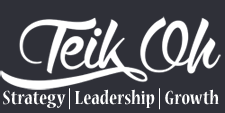Six Traits Every SME Leader Should Have
Having a great leader is crucial to the success of a business. In fact, positive leadership has been proven to improve employee engagement, especially in Small-Medium Enterprises (SMEs), which helps the company achieve its goals. A good leader also cultivates a positive workplace culture, which, in turn, encourages employees to be productive and loyal.
However, if you want to become a good leader, there are a few traits you should observe. Below are the six traits that every SME leader should possess.






No comments yet.
Add your comment